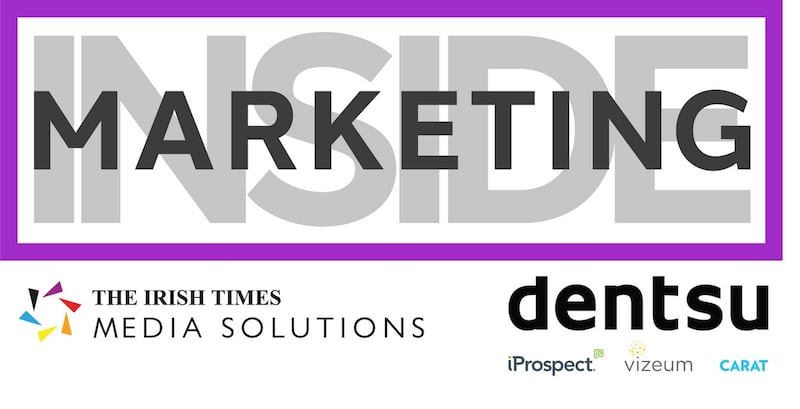For many, the answer to this question will depend on age. The younger you are, the less likely talk show radio, TV and news sites (or papers) will feature in your list of sources. Social media, YouTube, WhatsApp, blogs, newsletters and podcasts continue to represent a growing share of the pie, especially for those born after 1990. Research conducted by Pew Research and the Reuters Institute for the Study of Journalism (RISJ) offer a wealth of insights to back this up.
But how you get your news isn’t the question media folk should be asking. The more important question is: why are people seeking alternative sources of news? As a co-founder and the CEO of Dublin-based Noa – a news app that offers human-narrated versions of opinion and feature articles from leading publishers – this is a question I have spent endless hours researching. We have interviewed and deeply surveyed more than 2,000 individuals, across a wide range of disciplines and career progression. When tracked on a map, our conversations span multiple geographies, from the US and the UK to Columbia, Nigeria, India, Japan, Australia, China, Russia and several European countries.
Listen to episode 69 of the Inside Marketing podcast:
Key findings
I’m about to share our key findings and also suggest how news publishers should position their digital offerings to become more competitive against alternative sources of media. To begin, we should remind ourselves of the importance of journalists in any democracy. Their job is to bring about knowledge and information transparency. Or, put another way, their job is to hold powerful people to account through investigation and reporting so that we are all singing from the same hymn sheet. Without this oversight there is a high chance that citizens and the environment suffer, plain and simple. Resources are squandered, laws are changed to insulate those already in power and the wellbeing of those who toil (and their children) takes a lower priority. Need I share examples?
This is why I care so deeply about journalism. It is the backbone of any thriving democracy and can help to greatly improve the lives of billions of people by bringing about the right change. And for all that’s bad about ‘mainstream’ journalism, chances are you wouldn’t be reading this article in as much comfort if it didn’t exist.
But today, high-quality journalism struggles to compete for people’s time in a world awash with media.
Unlike in decades and centuries past, journalism has some fierce competition. The formula that once worked so well in newsrooms needs an updated recipe. From speaking with Noa listeners, three shortcomings become immediately apparent. Thankfully, each of these are solvable.
First, consumers demand multiple perspectives on the stories they are following. They will go to lengths to find alternative sources which offer lesser covered or opposing angles. And while many publishers do make an effort to cover different sides of the same story, they do not package these varying perspectives in an easily accessible manner. The solution here is simple: resource wider coverage, perhaps through syndication from rivals, and package this coverage in a manner that makes jumping from one to the next extremely easy. To be clear, this isn’t to say people want to consume two polarised extremes which cannot be backed up by fact or reason. What they seek are multiple well-reasoned arguments. Aside from helping to reach a wider audience, it will also build newsbrand trust, which a 2021 RISJ report puts as low as 44 per cent. Newsrooms need to acknowledge that their goal isn’t to tell people what to think, but to help them think.
Second, consumers seek convenience. Understanding the news should be easy and intuitive. And if not easy, it should at least be a page turner of a narrative. People don’t want to stretch their minds too much to grasp a story.
Convenience comes in two dominant forms – consumption and comprehension. For something to be convenient to consume it should be as short as possible or, if longer, have an audio playback option, thereby widening the window for consumption. For it to be convenient to comprehend it should be written in plain English and assume a low level of knowledge. You would never pick up a book and begin reading it from a random page. Yet, this is often what it is like for someone new to an ongoing story when they visit a news site and click on an article covering a recent development. If publishers want to expand their loyal audiences and encourage them to subscribe, they need to first write in a manner that matches their needs or point them to articles that can help them quickly get up to speed, before then diving into the recent happenings.
The third and final key finding concerns price. High-quality journalism costs a significant amount to produce.
Despite the societal good, consumers tend not to want to pay, with the exception of a few. The New York Times Company, one of the largest publishers in the world, spends over $1.6 billion each year running its newsroom and supporting operations. Due to declines in advertisement turnover, news publishers are increasingly depending on consumers as a source of revenue. This means consumers are bumping into paywalls like never before.
News publishers now think in terms of subscriber funnels, whereby a percentage of their anonymous web and app traffic translates to sign-ups and then to subscribers. These percentages are often very low, unlike Spotify which enjoys a roughly 50 per cent mix of paying and non-paying monthly active listeners, albeit at much lower prices. From the consumers’ perspective, few are willing to spend € 10 or more per month on a news subscription when they’ve yet to form a lasting habit. To try to combat this, publishers often price an initial period (about 30 days) at a super low price, before the higher recurring price kicks in.
Lower-tiered pricing
Our interviews with Noa listeners highlights that the fear of not forming a habit during the trial period and then forgetting about the subscription turns them off these offers, or forces them to cancel well before the initial offer period ends. This is where lower-tiered pricing can come in. News publishers should create low-priced offerings – for example, access to sport or opinion articles only for € 5 per month. The objective, once habits are formed, is to upsell subscribers to the higher-priced tier, thereby improving the subscriber funnel.

Working with some of the world’s best (English language) publishers has been both rewarding and challenging. They are open to innovate but tend to be slow to make bold moves. Reasoning by analogy can also be commonplace, as opposed to starting with the consumer and doing what is right by them. The Economist launched an audio version of its newspaper back in July 2007 because consumers reported having too little time to read. They started with the consumer and, unsurprisingly, are a leader when it comes to newsroom innovation. All the while, alterative media sources are constantly iterating. Constantly improving.
My message to newsrooms and those who love and value journalism as much as I do is let’s make quality journalism competitive again. Let’s be bold.
Gareth Hickey is co-founder and CEO at Noa – News Over Audio
[ irishtimes.com/insidemarketingOpens in new window ]











